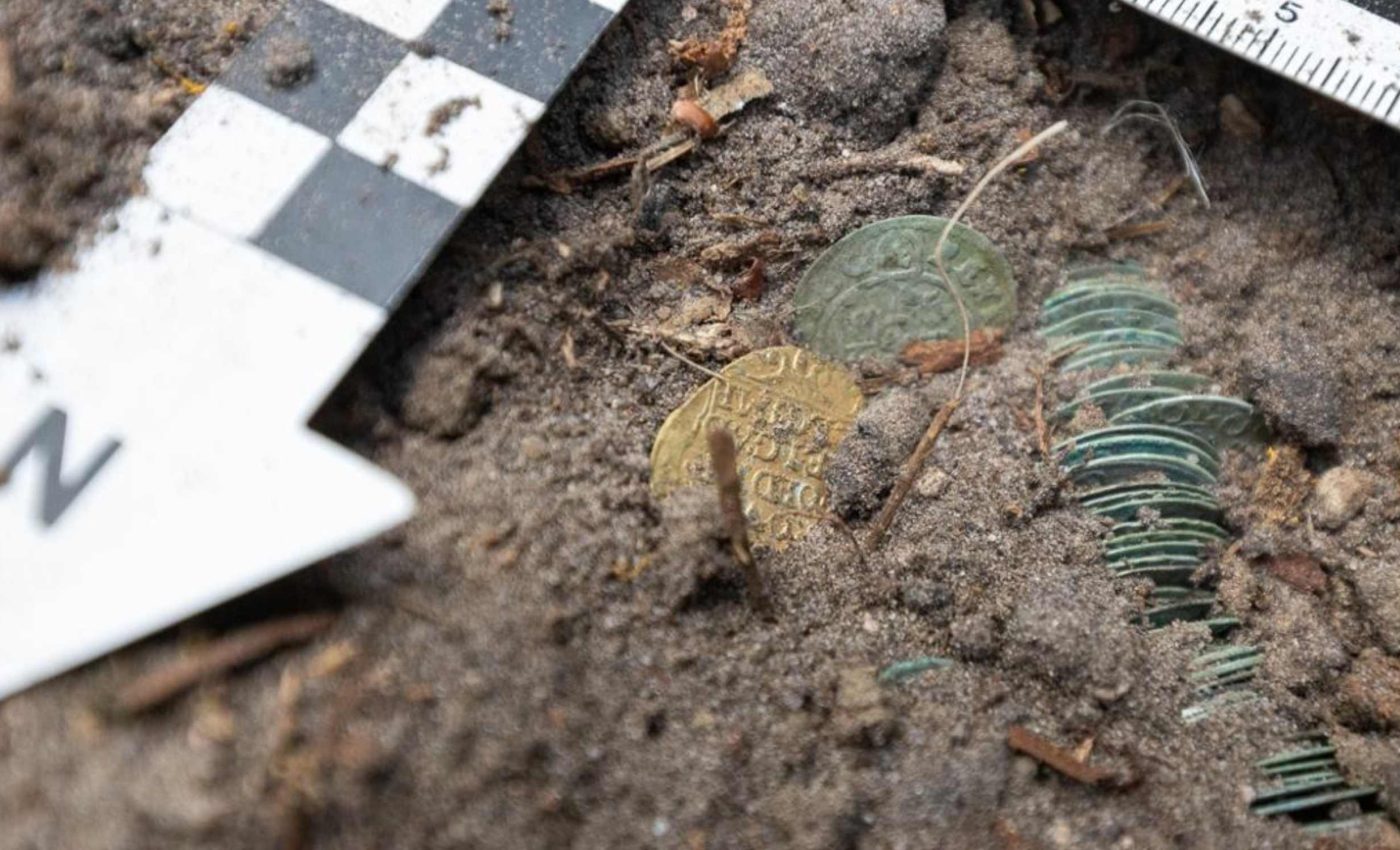
Discovery of gold and silver coins hidden in a forest leaves archaeologists speechless
Archaeologists in northeastern Poland reported the discovery of 69 buried coins, one gold and 68 silver, in the Knyszyńska Forest Landscape Park.
The find sits in a quiet stretch of protected woodland near Białystok and points straight to the money flows of the early 1600s.
Why a forest held money
The work was led by archaeologist Hubert Lepionka at the Magna Silva exploration group. His research focuses on regional archaeology and trade.
Polish Radio Białystok documented the region’s long ties to Dutch buyers who sought wood and forest goods from Podlasie and then shipped them downriver to Gdańsk.
“In the 16th and 17th centuries, Podlasie was a center for obtaining a very important raw material for Dutch merchants: timber, which was used for shipbuilding,” said Lepionka.
Inspectors at the provincial heritage office also noted traces of a burnt tree trunk at the spot. The fire did not harm the coins, which is a useful clue for later tests.
What the buried coins reveal
Museum Podlaskie reports that the youngest coin dates to 1634, which pins the hiding date to shortly after that year.
The set mixes a Dutch gold ducat from 1633 with Polish and Swedish small change. In numismatics – the study of coins and currency – such combinations can signal how money actually moved.
The silver included everyday units like poltoraks, trojaks, szostaks, and szelągs from mints across the Polish-Lithuanian Commonwealth and nearby lands. The 1633 ducat was struck in Gelderland, and would have traveled well, since ducats were widely accepted for large payments.
These mint marks sketch a map of exchange, from local timber camps to Baltic ports. They also help build the provenance – the record of the objects’ origin – that lets curators trace the life of the hoard.
Why people buried their wealth
In the 17th century, hiding coins in the ground was often a form of precaution, a defensive act against war, banditry, or sudden flight. Poland’s northeastern borderlands faced constant uncertainty, with armies moving through the region during the Swedish invasion known as “The Deluge.”
Archaeological reports from nearby sites show that small hoards of buried coins were common during that period. Travelers, merchants, and farmers buried money for safekeeping when news of conflict spread. Many never returned to reclaim their savings, leaving behind time capsules like the Knyszyńska Forest find.
Trade routes in the trees
Tree ring studies of Dutch East India Company shipwreck timbers show the Netherlands drew oak from across the Baltic in the early 1600s. Dendrochronology – tree ring dating – links those ships to forests far from Dutch shores.
Independent analyses track Prussian and Polish forest wood flowing into Western European yards from the 14th to the 17th centuries. That wider pattern fits the local story implied by the buried coins.
Forest goods were more than planks. Tar, honey, potash, hides, and bog iron fed industries that needed sticky, salty, or sturdy materials. Money followed those goods along rivers that still frame the region.
None of this proves the exact path of one purse buried in leaves. It does show the setting that made a single gold piece and a cluster of silver make sense here.
How scientists will read the site
Archaeologists will first secure the context and record layers with care. Stratigraphy – the layers formed by soil over time – can show whether the pouch moved or rested undisturbed.
Conservators will clean each coin under a microscope to read dates, legends, and mint marks. Those tiny letters can lock in where and when the pieces were struck.
If charcoal from the old trunk survives, it could be sampled to check the timing of the burn. A matching date would tighten the timeline for when the hoard of coins was buried.
Small metal finds around the pit could point to daily work or travel. Nails, buckles, or tool fragments often whisper about life near the hiding place.
Why these buried coins matter
Local curators suggest the owner may have been a middling military supplier or someone tied to forest work. That would match the mix of sturdy silver small change and one high-value gold coin.
“This is not only an impressive discovery, but also an important contribution to understanding the economic history of Podlasie,” added Adam Musiuk, Podlasie Voivodeship Conservator of Monuments.
The coins shift the focus from kings and battles to work and trade. They spotlight how a wooded landscape produced wealth that moved by raft, cart, and ship.
Finds like this refine the timeline of exchange across Central and Northern Europe. They also give students and the public a hands-on link to an economy that joined forests to fleets.
Information from a press release by the Podlasie Museum, Poland.
—–
Like what you read? Subscribe to our newsletter for engaging articles, exclusive content, and the latest updates.
Check us out on EarthSnap, a free app brought to you by Eric Ralls and Earth.com.
—–













